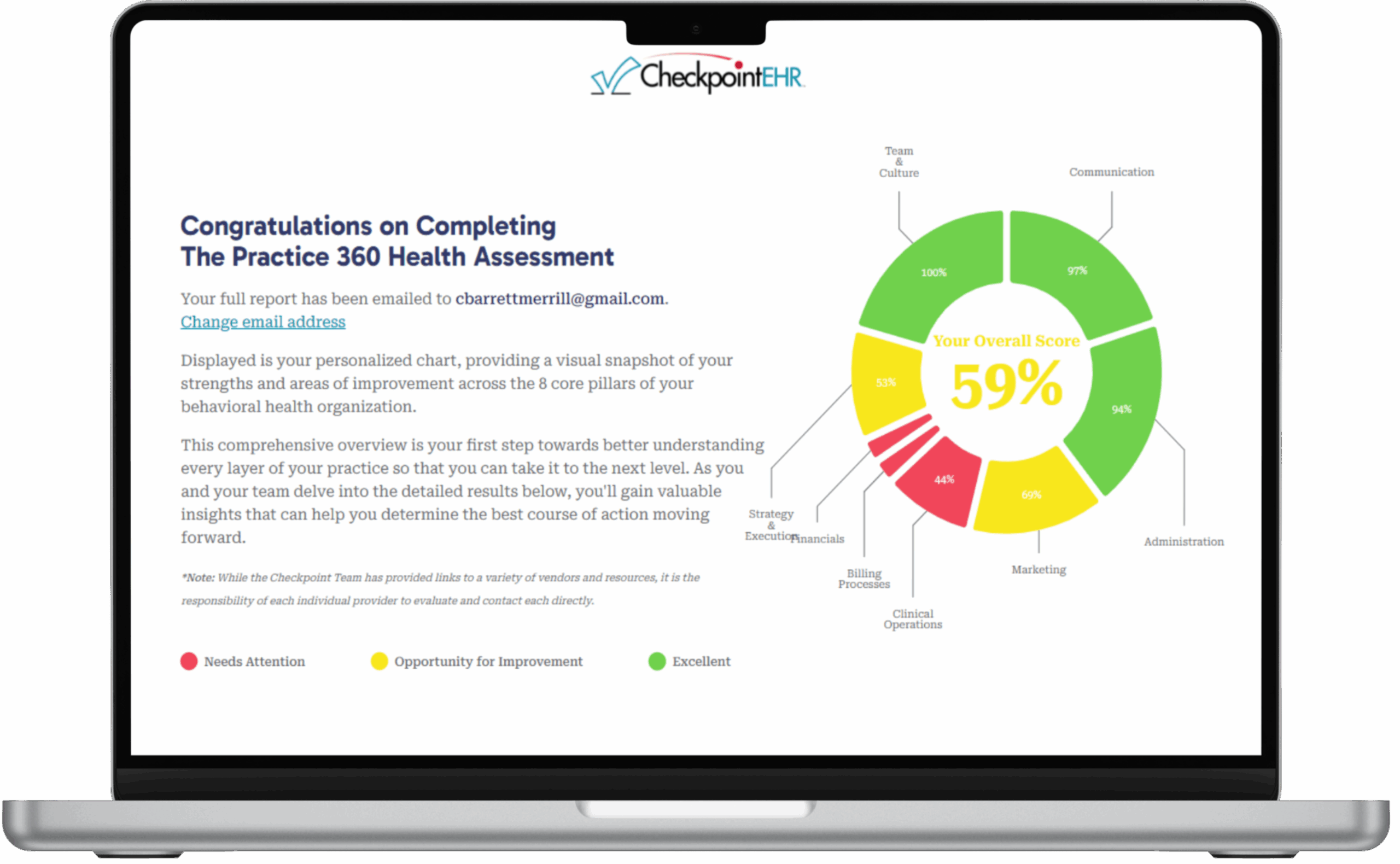How To Navigate Rate Increases as a Therapist

In uncertain times, navigating rate increases can seem like a dangerous prospect. After all, the payer does pay a little more — and nothing scares off patients like high out-of-pocket costs. But it’s important to remember that inflation, the rising cost of living, staff retention, overhead costs, and more, will also prevent you from serving your patients if you can’t afford to run your practice.
Thankfully, there is a way to safely navigate the inevitable rate increase, and in today’s blog post, we’re covering what you should do to fairly raise rates, retain more patients, and continue serving your clients. Read on to learn strategies from the Checkpoint EHR team on how to safely increase rates, and click for a free EHR demo without our behavioral health electronic health records (EHR) software!

Create a Plan and Establish a System
Nothing is more chaotic than attempting to raise rates on your patients without some sort of plan in place. In this stage of your journey through tumultuous rate hikes, you should consider who needs to know about your rate increase, and when you’re going to tell them. This includes clients, billers, new clients, and of course your own staff. After you’ve decided who you’re telling about the rate increase and when, then you can decide when rates go up. Many practices opt to use January 1, the start of the new year, as their set date for increasing rates. It’s memorable and, of course, consistent.
When customers feel like there’s a plan in place, and they know what to expect from your practice year after year, there’s a lot less frustration — for the patient and the practice!

Document Your Rate Increases
Again, this tactic for navigating rate increases falls under what many practitioners call “patient communication.” Once you’ve established your rate increase, be sure to put that increased rate on all of your intake forms, as well as make it clear to your current customers. This way, customers will know what to expect when they get your bill in the mail. Having your increased rate as public and as visible as possible also gives you a source of truth to refer back to when clients have questions.

Stay Consistent and Increase Rates Fairly
One major mistake many practices make is failing to raise rates at a consistent cadence. They might wait several years to increase their rates before dropping a huge $50 rate increase on their patients. It’s best to stay consistent with how often you increase rates, and by how much. Starting with a $5 rate increase per year, you’ll retain more customers, and you’ll collect more income. Oh, and patients won’t feel like they’re being blindsided by your billing practices.

Communicate to Clients
Just because your client signed the paperwork and agreed to pay your rate increase doesn’t mean they’re going to remember what they agreed to when it comes time for you to collect payment. The best strategy for navigating rate increases is communication, communication, and communication. Make sure to remind your clients at least one month in advance before the rate increase takes effect. Put signs in your practice’s waiting room. Even send out an email blast (if you have a HIPAA-compliant way of doing so) to remind patients that they’ll see a slight increase in their copay or medical bill, and you won’t have to worry about irritated patients unhappy with their latest bill.
Navigating a rate increase is like trying to guide a small boat through a huge storm — slipups here could cost you your staff, patients, and maybe even your practice. Thankfully with a lot of planning, communication, and the consistency your patients expect from their practitioners, you can safely navigate to calmer waters, and enjoy a hassle-free rate increase experience.
If you’re in need of great behavioral health EHR software that can help you manage rate increases, then schedule a demo with Checkpoint EHR today!

